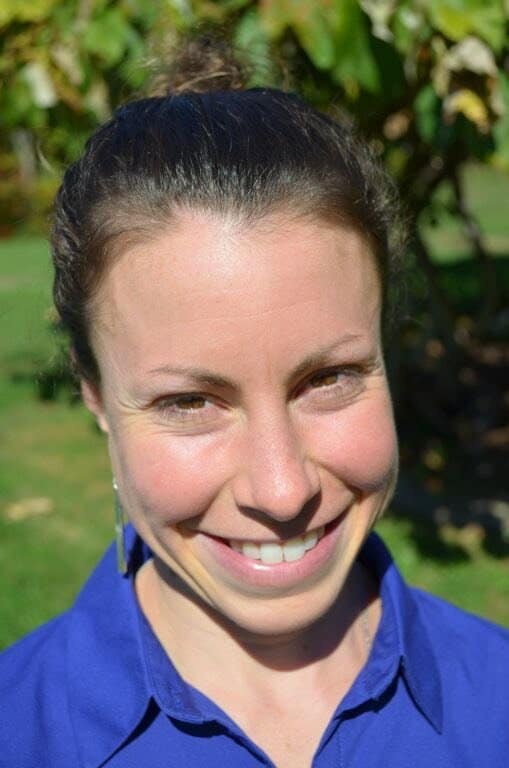Taking on fitness and health challenges is a great way to have structure, accountability, and motivation to help you stick with your goals and make measurable progress.
There are hundreds, if not thousands, of fitness, diet, and health programs to choose from, some of which are very focused, such as a 30-day plank challenge, while others are more comprehensive.
The 75 Hard Challenge is an example of the latter. It is designed to be a whole body and mind transformation process over the course of a rigorous 75-day challenge.
The 75 Soft challenge was developed as a more approachable and realistic alternative to the 75 Hard. It is a fantastic standalone fitness and health challenge or a progressive stepping stone as you work your way up to being able to eventually complete the 75 Hard program.
What are the differences between the 75 Hard and 75 Soft challenges? The 75 Soft challenge rules are similar in theme to those of 75 Hard but are more lenient and attainable.
In this article, we will discuss the 75 Soft challenge rules and how to take on the 75 Soft challenge.
We will cover:
Let’s get started!

What Is The 75 Soft Challenge?
Who created the 75 Soft Challenge? The 75 Soft Challenge, sometimes just called 75 Soft, was created by TikTok user Stephen Gallagher as a more tangible alternative to the rather extreme 75 Hard challenge that took social media by storm.
So, what is TikTok’s latest viral wellness trend?
The original 75 Hard Challenge has five daily tasks that are designed to push you outside of your comfort zone and build mental and physical toughness.
These tasks must be completed every day and directly target aspects of health such as your diet, exercise, water-drinking, and reading habits, as well as indirectly target aspects of your mindset such as discipline, planning, heartiness, and commitment.
While this is all well and good, some people are up for the time commitment, discipline, and energy required to complete the original 75 Hard Challenge.
Its aggressive nature is not suitable for everyone, or it needs a more intermediary challenge to take on before trying to tackle the 75 Hard challenge.
This is where the 75 Soft challenge comes into play. Rather than having five steps, 75 Soft has four constituent steps and is more realistic and doable for most people, at least as a starting place.
Completing 75 Soft can help you build the momentum and habits necessary to progress to 75 Hard later on.
In addition to having one less step than the 75 Hard challenge, the 75 Soft challenge places less emphasis on changes in your physical body.

What Are The Differences Between The 75 Hard Challenge And 75 Soft?
Although the 75 Hard Challenge is an awesome program for those who are more advanced and truly have the time, energy, and dedication to take on such a demanding feat, it is also quite unrealistic and potentially unsafe for beginners or those who have a lot on their plate.
The 75 Soft challenge rules are far less detailed than those for the original 75 Hard challenge. However, the 75 Soft Challenge retains the same commitment to trying to make healthy changes to your life over the 75-day program.
With that said, the rules are a little bit more lenient and attainable.
Here are the major differences between the 75 Soft Challenge vs. 75 Hard Challenge:
Rule 1: Diet for 75 Soft Vs. 75 Hard
One of the major differences between the 75 Hard and 75 Soft Challenge rules is in the strictness of the diet.
With the 75 Hard challenge, participants must follow a regimented diet. The specific diet you follow is up to you. For example, you can follow paleo, keto, vegan, or Whole30, but the diet you choose to follow must be tailored to your goals, and you can never, ever make a single deviation from the diet.
Essentially, 75 Hard has zero allowances for “cheat meals,” and no alcohol of any kind is permitted.
If you deviate even once from your diet, you are required to restart your 75-day challenge from day 1, even if you are on day 74 or 75.
In the 75 Soft challenge, the diet is much looser with far more latitude. The rule is to “eat well,” and you can drink alcohol as long as it’s for social occasions only.
If you want to begin healthy eating but don’t know where to start, we highly recommend seeking out the advice of a registered dietitian; they can work directly with you to devise a daily routine and meal plan that suits you.
If your goal is weight loss, they are best suited to help you obtain that in a healthy way.

Rule 2: Exercise for 75 Soft Vs. 75 Hard
One of the primary concerns or critiques of the 75 Hard Challenge from fitness and health professionals is the exercise rule.
When undertaking the 75 Hard program, you must complete a workout plan or workout routine consisting of two 45-minute workouts per day, and one must be done outside, no matter the weather.
You are permitted to choose any type of exercise you want, but it has to be done in two sessions, each lasting at least 45 minutes, with one taking place outdoors.
In contrast, the 75 Soft challenge rules for exercise are much more in line with how most people train and the physical activity guidelines for adults set forth by the Centers for Disease Control and Prevention.1Centers for Disease Control and Prevention. (2022, June 2). How Much Physical Activity do Adults Need? Centers for Disease Control and Prevention.
Those guidelines state that you are to accumulate either 150 minutes of moderate-intensity aerobic exercise or 75 minutes of vigorous-intensity cardio exercise per week.
The rule is to train 45 minutes per day and take one day per week off as a rest day. This amount of physical activity is not only more doable for most people (especially beginners) but may also be safer and decrease the risk of overtraining and injuries.
Realistically, some of those fitness challenges are going to take the form of active recovery or active rest.
As with the 75 Hard program, you can choose to do any type of exercise, from walking, running, and cycling to strength training, yoga, Pilates, boxing, or dancing.
You may want to consider working with a personal trainer; you will have to tell them what your goal is, though, as the likelihood is that they will recommend scheduled rest or a day of active recovery as a bare minimum.
Although fitness trends and wellness challenges harness motivation very effectively, in the long term, we want to ensure a degree of self-care. Mental toughness should include self-compassion.

Rule 3: Water Consumption for 75 Soft Vs. 75 Hard
Water intake plays a key part. During the 75 Hard challenge, the rule is to drink at least one gallon of water daily.
Part of the point of this rule is not only to improve hydration and capitalize on the health benefits of water but also to create the discipline of making time to drink that much water.
Even though it’s a “simple” task, it’s not necessarily easy.
The 75 Soft challenge rule regarding water consumption is to drink at least 3 liters of water per day.
Rule 4: Reading for 75 Soft Vs. 75 Hard
The 75 Hard vs. 75 Soft challenge rules for reading are very similar. Both challenges require reading ten pages per day (no audiobooks).
The only difference is that with the 75 Hard challenge, the stipulation is that the reading material must be non-fiction, whereas, with the 75 Soft challenge, you can read pages of any book that you choose, non-fiction, poetry, fantasy, fiction, mystery, or otherwise.

Rule 5: Body Photos for 75 Soft Vs. 75 Hard
Perhaps the biggest difference between the 75 Soft vs. 75 Hard challenge is that the 75 Soft version eliminates the fifth rule of the 75 Hard challenge, which is to photograph your body every single day to obtain a progress picture.
The 75 Soft Challenge definitely places less emphasis on the importance of physical changes and instead focuses more on creating lifestyle patterns and habits that will be sustainable for a healthy body and mind for life.
While the 75 Hard challenge can lead to massive and impressive body transformations along the lines of an extreme diet or fad diet, the 75 Soft challenge is designed to gradually change your mindset and physique in healthy, approachable, and sustainable ways.
The results may be less dramatic but should lead to the cultivation of habits and lifestyle changes that you can maintain for the long term, which over time, will lead to improvements in body composition and physique.

How to Do the 75 Soft Challenge
The 75 Soft Challenge lasts 75 days. You are to do each daily task every day of the challenge.
Four 75 Soft challenge rules you must follow:
- Eat a healthy, well-balanced diet, drinking only on social occasions.
- Exercise for 45 minutes daily, taking at least one rest day per week.
- Drink at least 3 liters of water per day.
- Read ten pages per day.
The 75 Soft challenge can be a fantastic way to improve your health in a doable manner. It can help you establish healthy habits and a commitment to your wellness.
After you successfully complete the 75 Soft program, you might consider graduating to the 75 medium challenge or even 75 Hard. You’ve got this!
If you enjoyed this article, check out:











